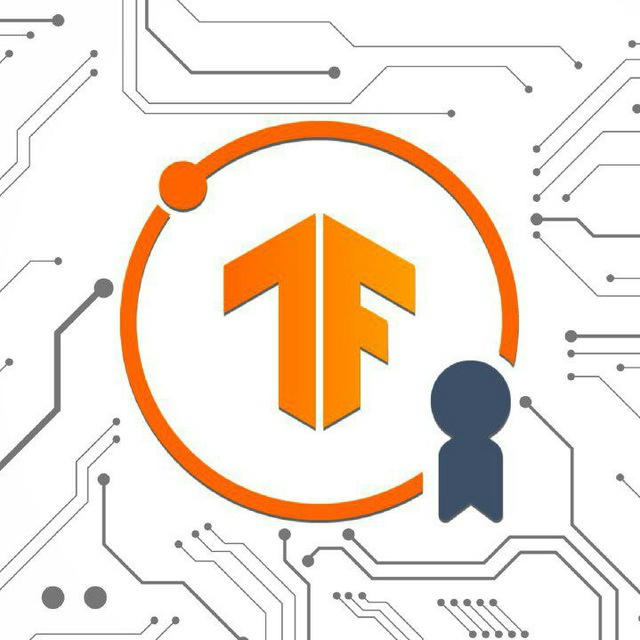
Artificial Intelligence | AI Tools
🔰 Machine Learning & Artificial Intelligence Free Resources 🔰 Advanced Data Science and Deep Learning Concepts 🔰 Build Chatbots & Large Language Models 🔰 Learn PyTorch & Tensorflow Admin: @guideishere12
Більше18 250
Підписники
+17624 години
+8937 днів
+3 07730 днів
- Підписники
- Перегляди допису
- ER - коефіцієнт залучення
Триває завантаження даних...
Приріст підписників
Триває завантаження даних...
AI Engineers can be quite successful in this role without ever training anything.
This is how:
1/ Leveraging pre-trained LLMs: Select and tune existing LLMs for specific tasks. Don't start from scratch
2/ Prompt engineering: Craft effective prompts to optimize LLM performance without model modifications
3/ Implement Modern AI Solution Architectures: Design systems like RAG to enhance LLMs with external knowledge
Developers: The barrier to entry is lower than ever.
Focus on the solution's VALUE and connect AI components like you were assembling Lego! (Credits: Unknown)
The Process Of Training AI Models
AI designers and engineers develop AI models through a process called training. Here’s an example of the typical steps a designer might take in this process, in this case for building a model that predicts rainfall:
Define the problem to be solved.
AI designers and engineers want to predict rain to help people stay dry when commuting to and from work. They start by considering AI’s capabilities and limitations before identifying an AI solution.
Collect relevant data to train the model.
AI designers and engineers gather historical data of days when it rained and days when it didn't rain over the past 50 years.
Prepare the data for training.
AI designers and engineers prepare the data by labeling important features, such as outdoor temperature, humidity, and air pressure, and then noting whether it rained. It's also common to separate the data into two distinct sets: a training set and a validation set to test with later.
Train the model.
AI designers and engineers apply machine learning (ML) programs to their rain prediction model, which helps it recognize patterns in its training data that indicate the likelihood of rainfall. Those patterns might include high temperatures, low air pressure, and high humidity.
Evaluate the model.
AI designers and engineers use the validation set they prepared earlier to assess their model's ability to predict rainfall accurately and reliably. Analyzing a model's performance can uncover potential issues impacting the model, such as insufficient or biased training data. If any issues exist, the AI designers and engineers may revisit an earlier step in this process to try a different approach. Once the model performs well with its validation set, the process continues to the next step.
Deploy the model.
When the AI designers and engineers are satisfied with their model's performance, they deploy it in an AI tool—helping people in their city stay dry on their way to work!
Model training is an iterative process. AI designers and engineers can repeat each step as many times as necessary and make adjustments until they create the best model possible.
But the process doesn't stop at deployment. Once users interact with a model in practical situations, the model might be exposed to new challenges. AI designers and engineers should continuously monitor and collect feedback on their models, ensuring their models continue to perform reliably and to identify areas for improvement. It's this iterative process of continual refinement that makes AI models precise and versatile, which ultimately leads to effective, reliable AI tools. When you understand how AI models are developed, you can make informed decisions about when and how to use an AI tool to accomplish your goals.
Join for more: https://t.me/machinelearning_deeplearning
👍 2
Best Resource to Learn Artificial Intelligence (AI) For Free
👇👇
https://imp.i115008.net/qn27PL
https://i.am.ai/roadmap
https://bit.ly/3h97QpE
https://t.me/datasciencefun/1375
http://microsoft.github.io/AI-For-Beginners
https://ai.google/education/
Share with credits: https://t.me/free4unow_backup
ENJOY LEARNING 👍👍
❤ 4
Each ML technique has its own strengths and weaknesses. Depending on the type of data that's available and what's needed to solve the particular problem, AI designers may use one, two, or all three of these techniques to produce an AI-powered solution.
Generative AI
Advancements in machine learning have helped pave the way for generative AI—AI that can generate new content, like text, images, or other media. This type of AI often uses a combination of supervised, unsupervised, and reinforcement learning to create original content.
For instance, all three approaches play distinct roles in conversational AI tools. Supervised learning equips conversational AI tools with foundational dialogue data, enabling them to respond to common conversational cues appropriately. Unsupervised learning enables them to interpret nuances in language, like colloquialisms, that occur naturally in conversation. Reinforcement learning further strengthens these tools by allowing them to improve their responses in real-time based on user feedback. This enables them to adapt to the conversational context and engage in natural conversations.
Generative AI's ability to create and innovate offers a range of benefits to all sorts of workplaces and professions, such as marketing, product development, engineering, education, manufacturing, and research and development. These benefits include:
Greater efficiency: Generative AI can automate or augment routine tasks, allowing workers to focus on other work priorities.
Personalized experiences: Generative AI can tailor its interactions to individual preferences and needs.
Better decisions: Generative AI can quickly analyze vast amounts of data to uncover useful insights.
These are just some of the ways that generative AI can enhance your work.
Join for more: https://t.me/machinelearning_deeplearning
Artificial Intelligence | AI Tools
🔰 Machine Learning & Artificial Intelligence Free Resources 🔰 Advanced Data Science and Deep Learning Concepts 🔰 Build Chatbots & Large Language Models 🔰 Learn PyTorch & Tensorflow Admin: @guideishere12
👍 4
Artificial intelligence (AI) and machine learning (ML) are changing the future of work. While both terms seem similar, machine learning is actually a specific technique used by AI designers to achieve artificially intelligent computer programs. Knowing the basics of how AI and ML relate to each other can help you navigate these technologies as they transform the work landscape, enabling you to effectively contribute to AI-driven projects or lead your own AI initiatives.
In this reading, you'll explore some of the ML techniques AI designers use to build AI programs, deepening your understanding of how ML leverages data to make decisions and perform tasks. You'll also explore how ML techniques have paved the way for generative AI.
AI development techniques
Artificial intelligence refers to computer programs that can complete cognitive tasks typically associated with human intelligence. There are two main techniques used to design AI programs:
Rule-based techniques involve creating AI programs that strictly follow predefined rules to make decisions. For example, a spam filter using rule-based techniques might block emails that contain specific keywords using its predefined logic.
Machine learning techniques involve creating AI programs that can analyze and learn from patterns in data to make independent decisions. For example, a spam filter using these techniques might flag potential spam for the recipient to review, preventing automatic blocking. If the recipient marks emails from trusted sources as safe, the spam filter learns and adapts its logic to include similar emails from that sender in the future.
AI tools can use either rule-based or ML techniques, or even a combination of both. In general, rule-based techniques are commonly used for tasks that require rigidity, such as blocking messages from untrusted senders that are obviously spam, like requests for bank transfers or private information. Conversely, ML techniques are better suited for tasks demanding flexibility and adaptability, like learning to recognize that messages from trusted senders containing typos are not spam.
Approaches to training ML programs
Recall that machine learning is a subset of AI focused on developing computer programs that can analyze data to make decisions or predictions. AI designers often use ML in their AI programs because it doesn’t have the limitations of rule-based techniques.
A large circle representing AI with a smaller circle representing ML inside.
There are three common approaches to training ML programs:
Supervised learning
Unsupervised learning
Reinforcement learning
Supervised learning
In this approach, the ML program learns from a labeled training set. A labeled training set includes data that is labeled or tagged, which provides context and meaning to the data. For instance, an email spam filter that's trained with supervised learning would use a training set of emails that are labeled as “spam” or “not spam.” Supervised learning is often used when there's a specific output in mind.
Unsupervised learning
In this approach, the ML program learns from an unlabeled training set. An unlabeled training set includes data that does not have labels or tags. For instance, ML might be used to analyze a dataset of unsorted email messages and find patterns in topics, keywords, or contacts. In other words, unsupervised learning is used to identify patterns in data without a specific output in mind.
Reinforcement learning
In this approach, the ML program uses trial-and-error to learn which actions lead to the best outcome. The program learns to do this by getting rewarded for making good choices that lead to the desired results. Reinforcement learning is commonly used by conversational AI tools. As these tools receive feedback from users and AI designers, they learn to generate effective responses.
❤ 1
Фото недоступнеДивитись в Telegram
24 Top Use Cases for Artificial Intelligence(AI) IN 2024
👍 4
Оберіть інший тариф
На вашому тарифі доступна аналітика тільки для 5 каналів. Щоб отримати більше — оберіть інший тариф.

 Сітка:
Сітка: